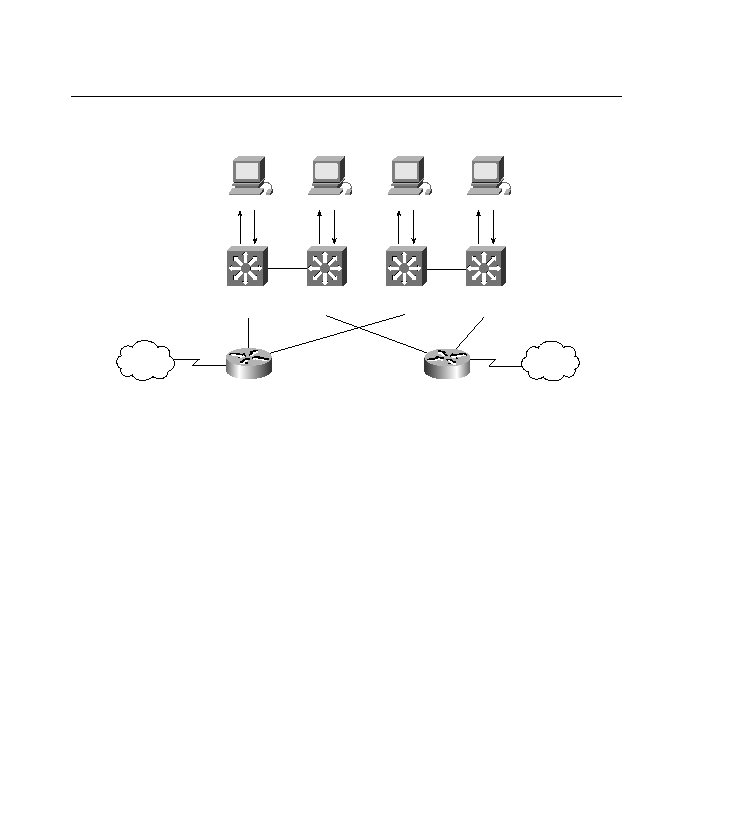
access-layer switch connect to distribution-layer switches A and B. Redundancy in the
backbone is achieved by installing two Catalyst switches in the core. Redundant links
from the distribution layer provide failover as well as load balancing over multiple paths
across the backbone. Redundant links connect access-layer switches to a pair of Catalyst
multilayer switches in the distribution layer. Fast failover at Layer 3 is achieved with
Cisco's Hot Standby Router Protocol (HSRP). The two distribution-layer switches
cooperate to provide HSRP gateway routers for all the IP hosts in the building. Fast
failover at Layer 2 is achieved by Cisco's UplinkFast feature. Load balancing across the
core is achieved by intelligent Layer 3 routing protocols implemented in the Cisco IOS
software.
company grows and changes, so will the demands placed on the network. Business and
Web applications will become more powerful and demanding as networks deliver more
information to more users. The certainty of change makes flexibility a primary
requirement for LAN solutions. To give WeServeData the technical liberty to change and
grow, Cisco Systems offers a broad selection of best-of-class LAN solutions in desktop,
stackable, and chassis-based models. Choose the right-size solution to meet today's
requirements with the scalability and robustness for tomorrow's needs at WeServeData.
As the LAN grows, connections and bandwidth can be added with clustering and stacking
options.